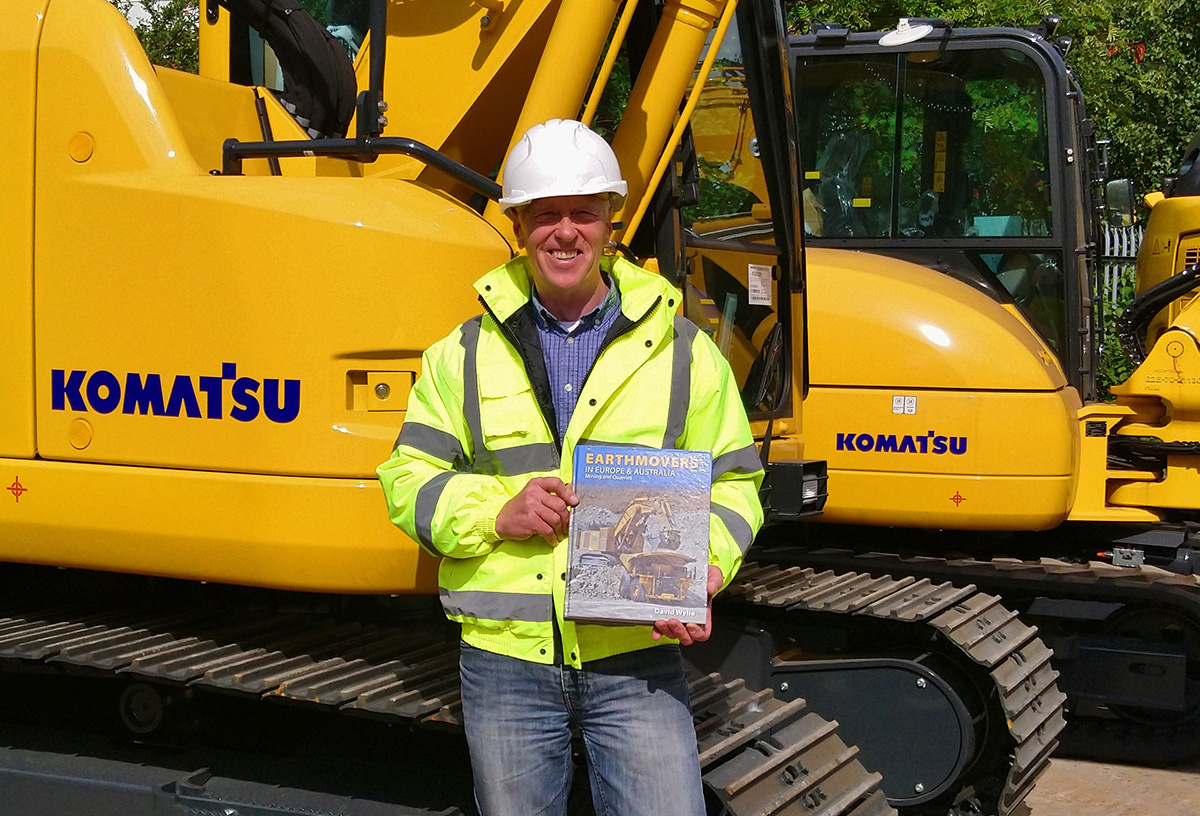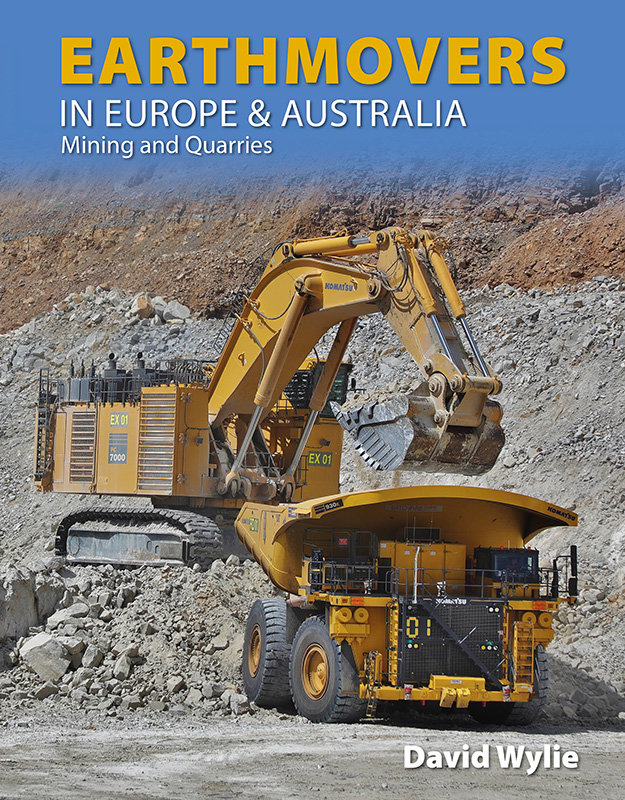
SCOTLAND-based construction equipment photojournalist David Wylie is releasing his third book after being invited to tour some of Australia’s largest mining operations.
Earthmovers in Europe & Australia features 23 chapters and almost 500 photographs documenting some of the world’s largest and most impressive mining and quarry machines. There are insights from operators, machine designers, and some of the characters behind the equipment.
Many of the reports from the Australian section of the book were compiled in February and March 2020 immediately prior to the Covid-19-enforced lockdown period. Indeed, David had to cut his trip short to avoid being stranded halfway around the world.
“I always fancied doing a book with larger mining machines than you can typically see in the UK and Europe,” David told Project Plant. “I got talking to the guys from MineWare (a payload technology company based in Brisbane that was acquired by Komatsu in 2017) at the last bauma and got invited out for a week’s tour around some very large mining companies in Australia.”
One of the site visits was to Batchfire’s Callide coal mine. The firm is a major proponent of MineWare technology at the mine, which David explained was located around two hours north of Brisbane, Queensland.
“The Batchfire mine was operating Komatsu PC7000 excavators and 930E haul trucks,” David said. “I’d been wanting to see a PC7000 for a while. It’s a 700t machine with a 34 cubic metre bucket.
“One of the things that really stood out was the guys at Batchfire were digging a ten-metre seam of coal. Over in the UK we’d be quite happy digging a ten-inch seam.”
The Batchfire site provided the location for the book’s front cover photograph of a PC7000-11 – a machine that David had taken a keen interest in for almost a decade.
“It was the biggest machine I saw in Australia,” he said. “It was one that was of most interest to me because I actually visited the Komatsu factory out in Germany in 2012 when that machine was just on the drawing board. I was told about it at the time, but it was all hush-hush. In 2016 it was launched at bauma. I had followed its progression over the years.”
David also covered a story remotely on an Australian company called Wolff Mining, which was acquired by National Group.
“They had bought the first semi-autonomous Caterpillar D11 bulldozers – a 100t class bulldozer whereby they’ve got two guys sitting in a portacabin driving eight machines,” he revealed. “That was quite amazing. We had seen semi-autonomous remote-controlled dozers from Caterpillar at the last Hillhead and at bauma in 2019. To actually talk to a company which is deploying these in Australia, and see how they operate, was really fascinating.”
Other machines to feature heavily in the book include the 200t class Cat 944 loader and 637K scraper, Liebherr R9800 and R9600 excavators, and the Terex TR100 rigid hauler.
David also recounts the story of the very first Komatsu D475A-8 dozer.
“This is the largest bulldozer in Europe at 115t straight out the factory,” David said. “It was commissioned in Estonia at an oil shale mine. That was really interesting, and I’ve got some fantastic pictures from the Komatsu dealer there of the machine being built up and then transported, fully built, with the ripper and the blade attached. It was such a big deal that the Japanese ambassador to Estonia attended the handover ceremony.”
Elsewhere in the book, David tells the story of 95-year-old Alex Kelly, from Motherwell, who rose from an apprentice at the Euclid factory to become works manager – the equivalent of the modern MD. He spent several years in Brazil before returning to Europe.
There’s also a chapter on the Demag H485, which was the largest hydraulic mining excavator in the world at one time. It was put into operation in Falkirk, digging for coal at Roughcastle. While we tend to think of telematics technology for construction equipment as a relatively modern invention, David managed to source photographs of Demag engineers sitting in a portacabin with equipment monitoring the movements, productivity, and stresses and strain on that machine in 1986!
With tens of thousands of photographs to choose from, David explained how he decides which ones make the final cut.
“You try to tell the stories through words and pictures. There are 72,000 words and nearly 500 images in the book. In terms of picking the pictures, it’s the ones that show the machine off the best, show the sites in full, and put the reader inside the cab of the machine. I was lucky enough to get in the cab of most of these machines. I picked those pictures so that you get a feel for the mining operation, what the machine is doing, and how the operator feels about the machine. I tend to pick the most interesting pictures and most dramatic ones.”
Earthmovers in Europe & Australia follows the success of David’s two previous books: Earthmovers in Scotland and Earthmovers in UK and Germany. The book includes a foreword by Peter Haddock, who David described as the first PR person he met when he started writing articles for Earthmovers magazine in April 2010.
Reflecting on the response to his previous books, David said, “I’ve had really good feedback from editors and people who’ve reviewed them. I’ve also had tremendous feedback from the readers who buy them.
“I’ve probably got another two books sitting on my computer at the moment if I can find the time to publish them!”
Earthmovers in Europe & Australia is a limited-edition book and is only available to purchase from David directly. You can get in touch with him via his Facebook page – https://www.facebook.com/earthmovingbooks










